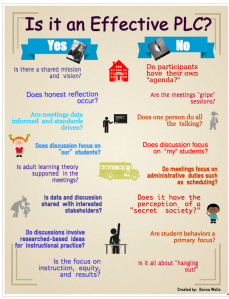At the beginning of this class I considered myself very competent in delivering effective professional development. However, the section about adult learning was very informative. I learned a great deal about restructuring my professional learning opportunities and plan to do a better job of questioning and listening when coaching the teachers I work with. My thoughts about the importance in building relationships were validated. The Change Game was a fun interactive way to help me understand that change is a process that takes planning and time. I am still fairly new in my position but I am now more aware that I need to play an active role in helping systemic change occur in my county. My opportunities to coach have increased and have also become more meaningful. I have begun implementation of the plan I developed and hope to have the distance-learning modules in operation this summer. I have been fortunate to work with supportive school leadership and look forward to continuing to evaluate and implement my professional development plan. I believe this cooperative learning experience will produce positive outcomes in my district. I plan to share the plan I development with other ITFs in my district and welcome their suggestions and feedback as we work to bring effective technology integration to Burke County.
My group worked well together. Everyone did their share, was flexible, and considerate. I appreciate the fact that we brought different perspectives to our discussions since we work in different grade levels. I feel sure we will continue to be part or each other’s PLN as we move forward in our careers. One major personal benefit of this program is that I am building confidence in myself as a leader. I look forward to implementing the skills I have learned as I grow personally and professionally.


